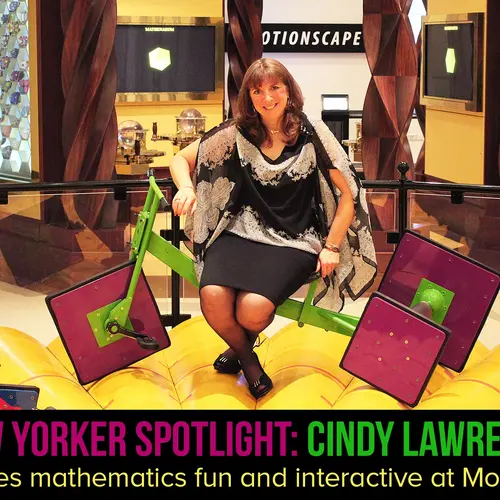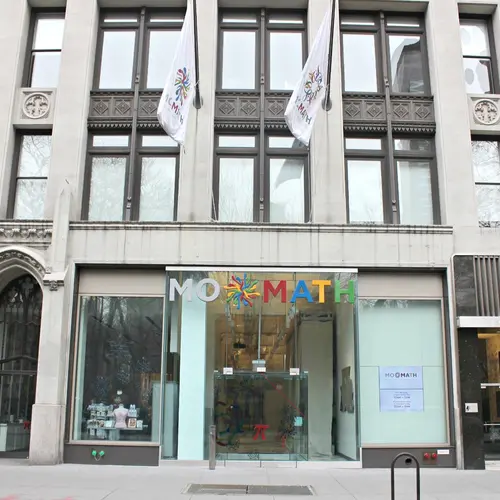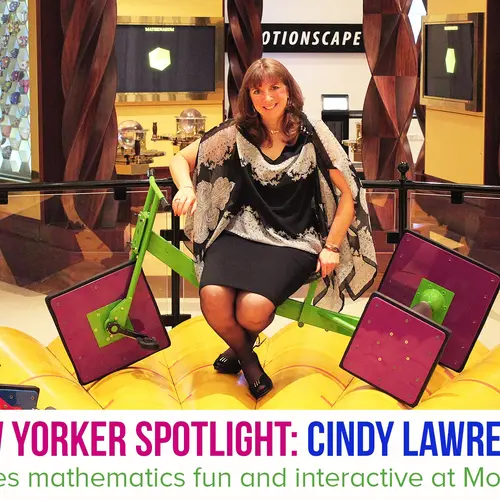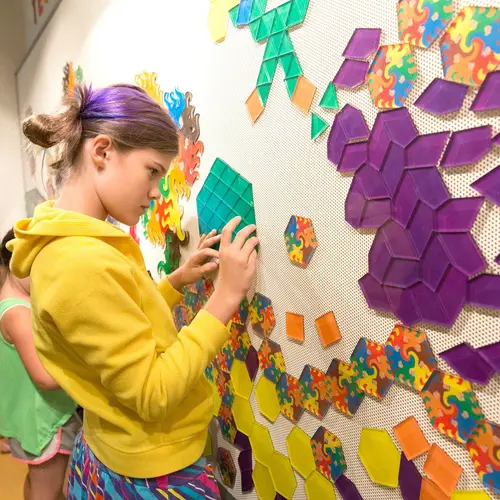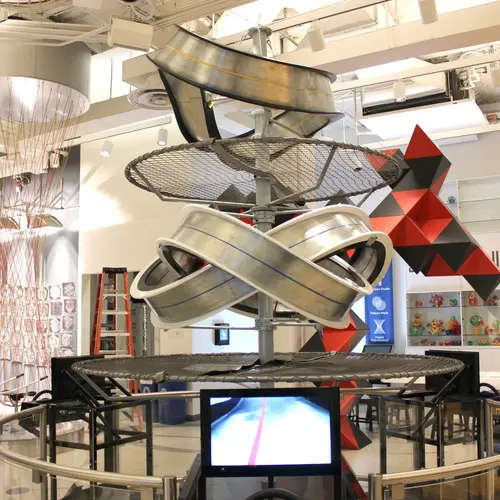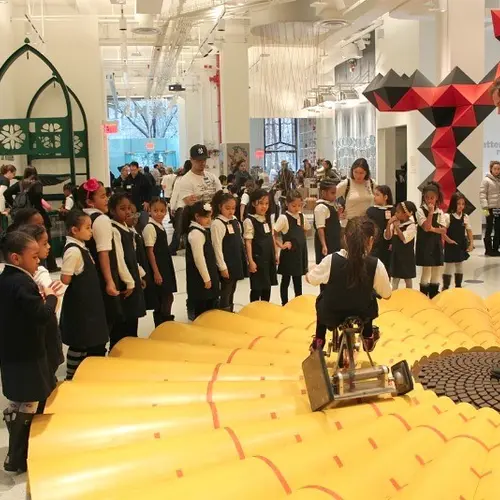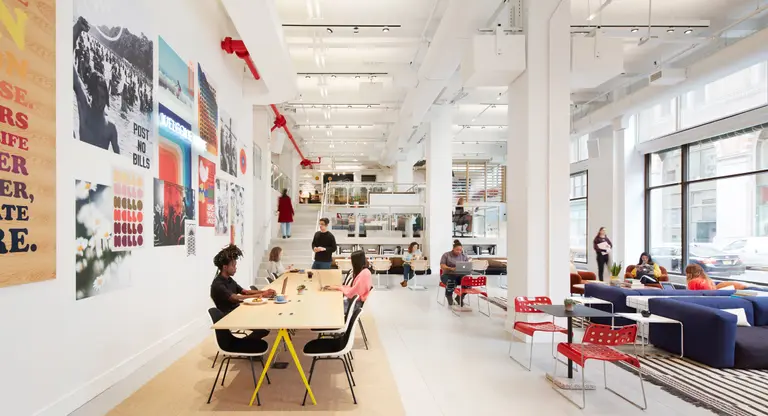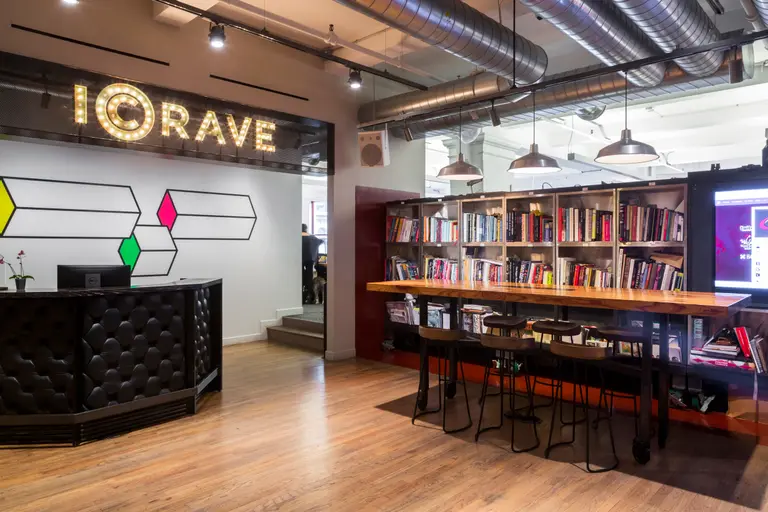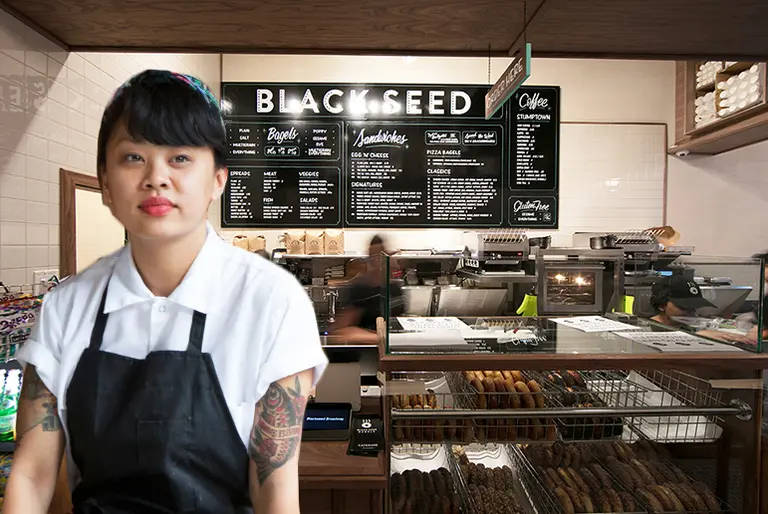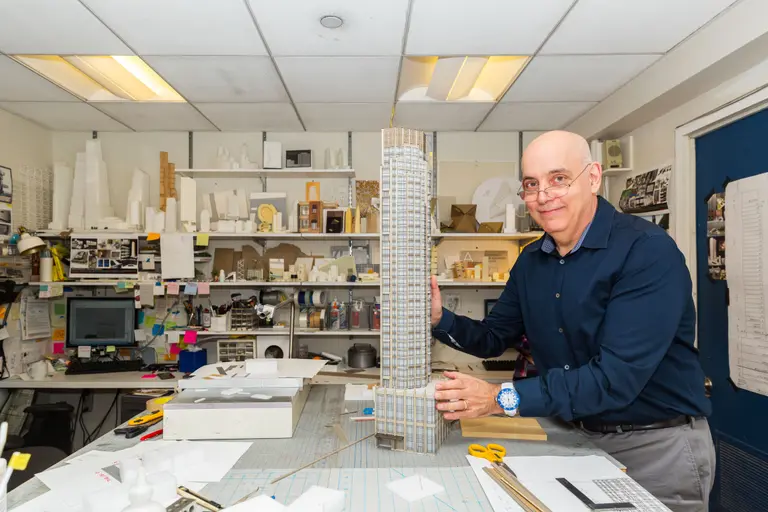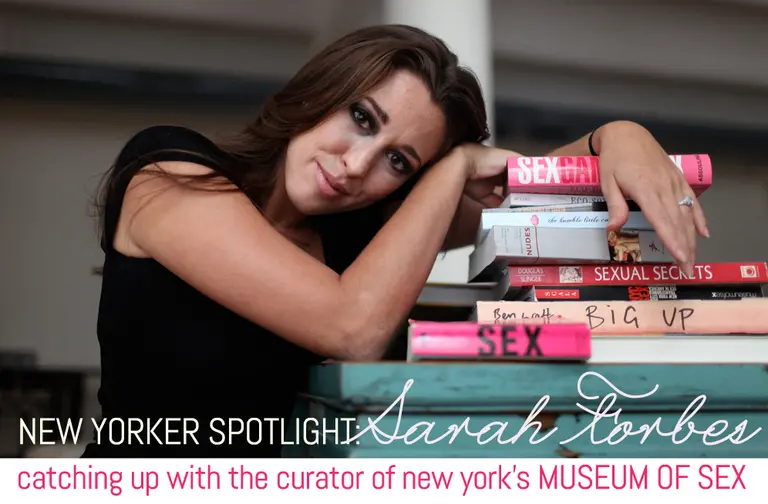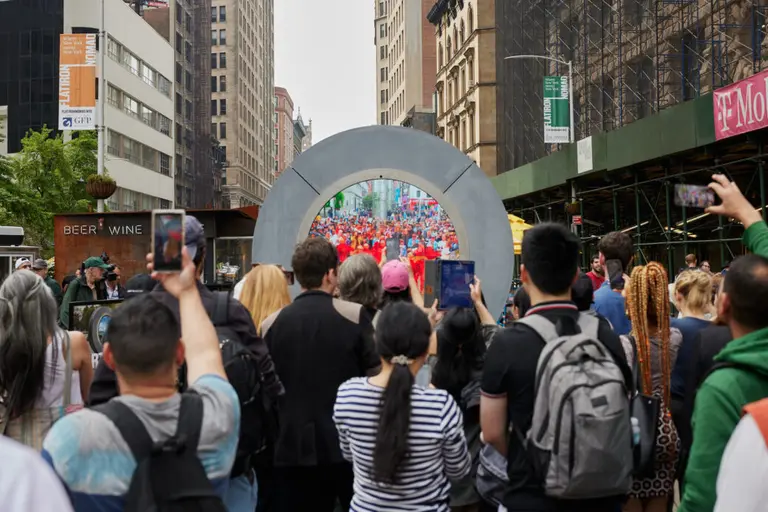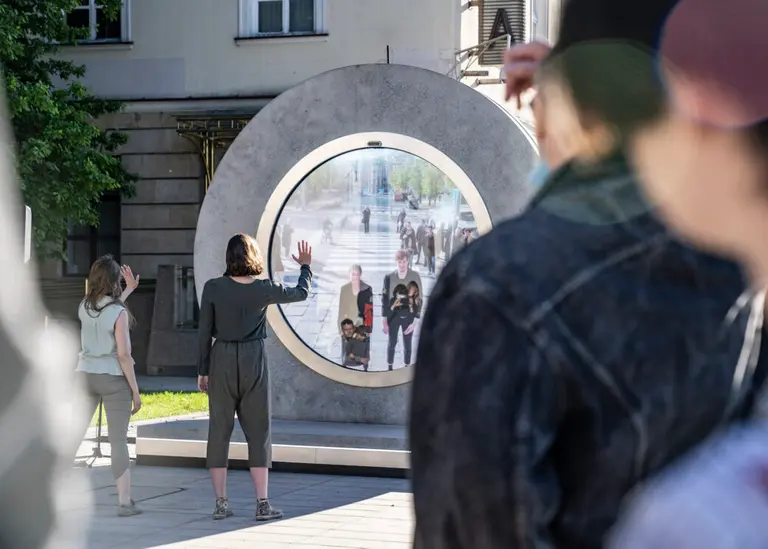Spotlight: The Museum of Math’s Cindy Lawrence on making math a fun and interactive endeavor
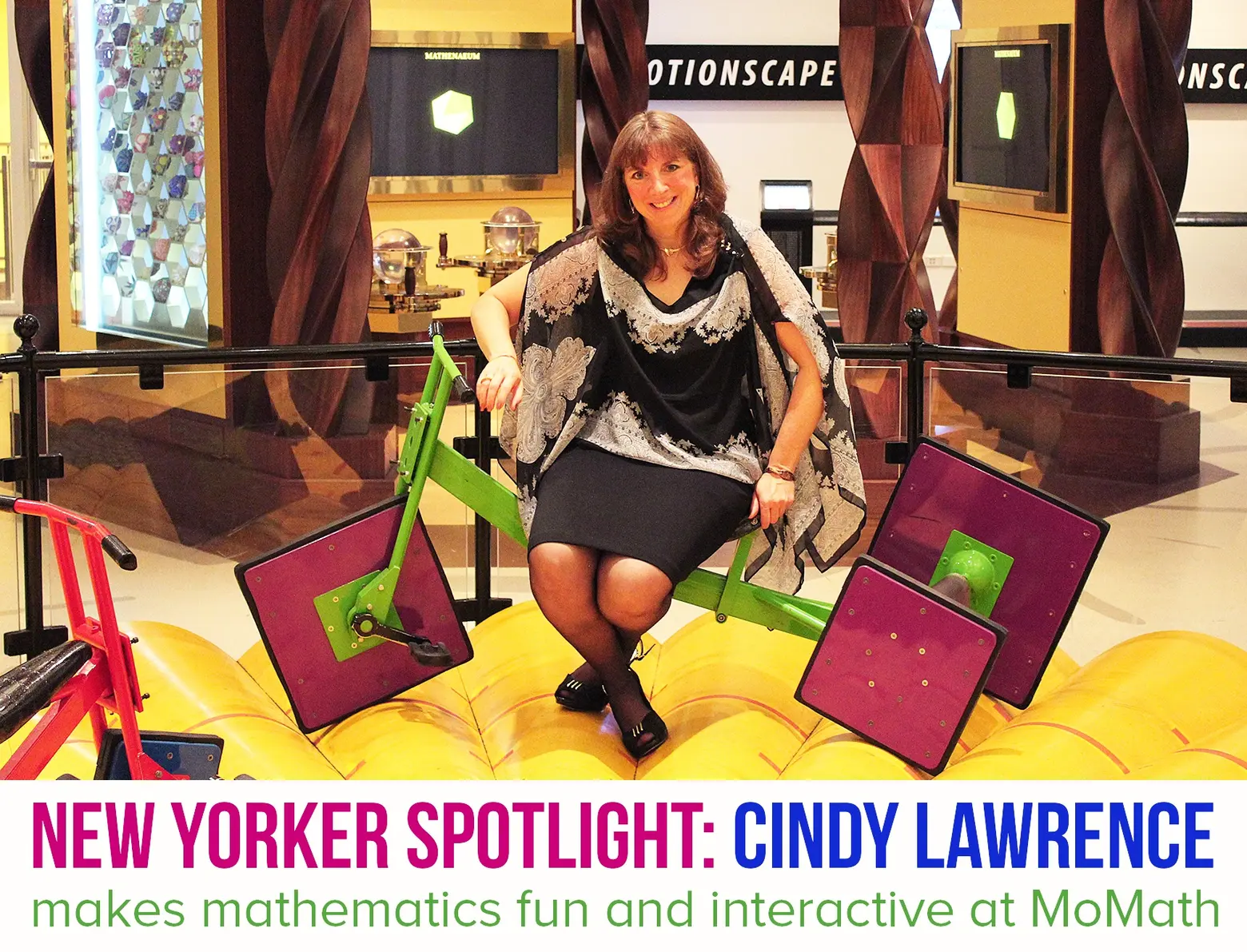
In a city with a museum in an elevator shaft and another all about transit history, it should come as no surprise that there’s a museum dedicated to math. Located across from Madison Square Park, the National Museum of Mathematics is an institution devoted to the numerous possibilities that numbers hold. Since opening in 2012, MoMath has been a place for visitors of all ages to gets hands on with the subject through interactive exhibits that explore conundrums like how it’s possible for a square-wheeled tricycle to pedal on a circular, curved surface. And as of last week, the museum offers the chance to drive remote-controlled cars on either a Möbius strip or a trefoil track in the newly opened Twisted Thruway.
6sqft recently visited the museum to speak with Executive Director and CEO Cindy Lawrence about the importance of making math interactive and most importantly, fun.
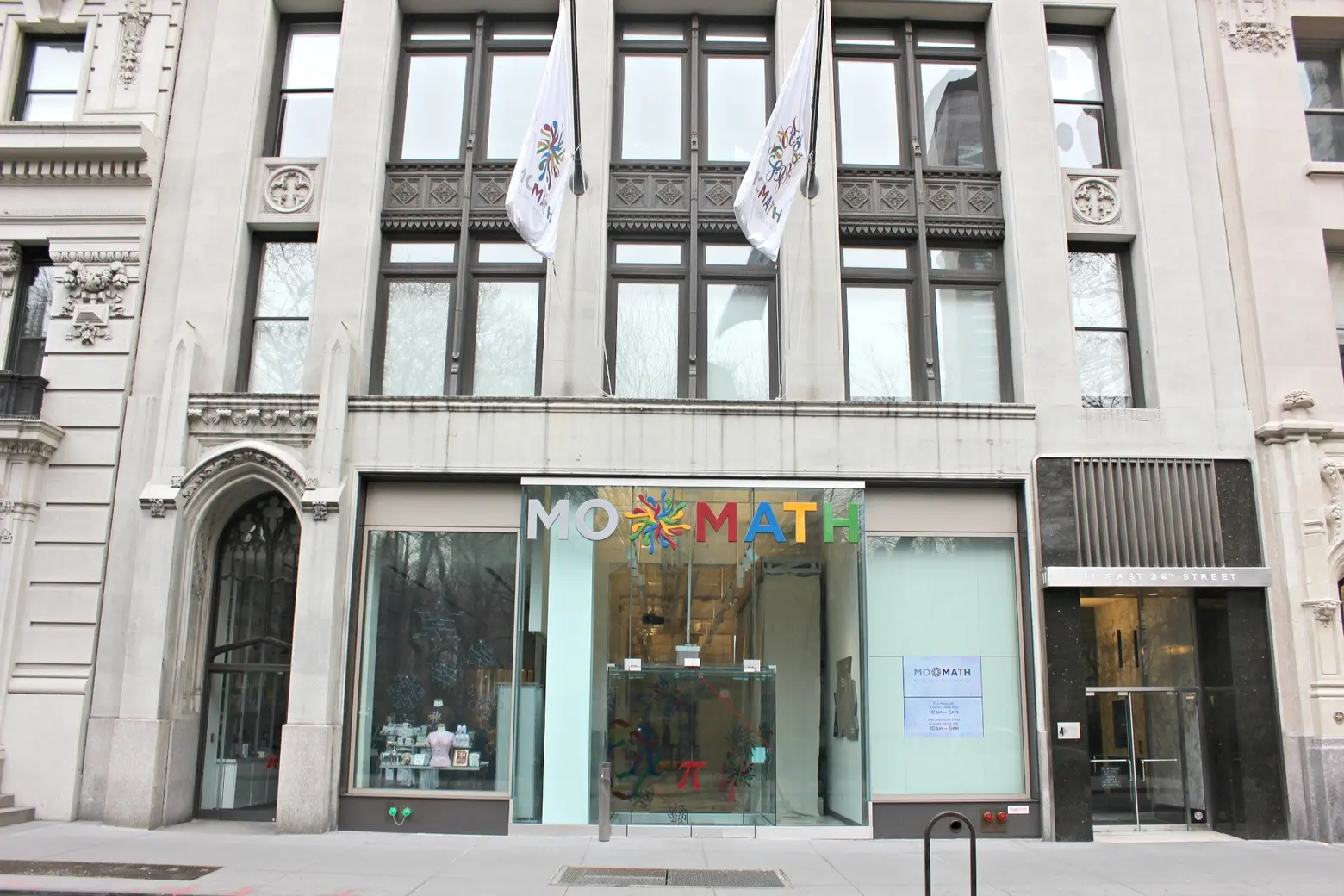
Regardless of age, many people find math intimidating. How does the museum change people’s perceptions about the subject?
Most people think about math the way they remember learning it in school. It’s all about paper and pencil and lots of erasing and maybe some blackboards and calculators. Certainly right and wrong is a big part of it, which is where the intimidation comes in. When you get it wrong, it’s hard to accept, and you maybe start to think it’s something you can’t do. So the museum is not about right and wrong, and it’s not even about the way you do it. It’s about exploring, full-body experiences, and interacting. If you look around, it’s about color and creativity and fun, and people don’t associate those words with mathematics.
What makes New York the perfect location for a math museum?
It’s interesting because in the initial conception we were going to be in a suburb, about an hour-and-a-half away from New York City. But there was so much excitement about having a mathematics museum that we decided to open in the city since there are so many diverse people here. It’s not just kids, and it’s not just adults. It’s not just people of one race or color or another. We have the very affluent in New York and unfortunately we have the very much less affluent, and we want to be accessible to everyone.
Was there a specific reason the museum chose to open across from Madison Square Park?
There are a couple reasons we landed here. One was the friendly nature of the people who were already here. The Business Improvement District, in particular Executive Director Jennifer Brown, was so welcoming and so encouraging of having a cultural institution here. But I’ll be frank, the park across the street was also a really appealing feature because there are families who maybe struggle to pay admission to come to the museum, and going out for lunch on top of that makes it inaccessible. So having a park where you can bring your own lunch and picnic makes the entire day more affordable, and that was important to us.
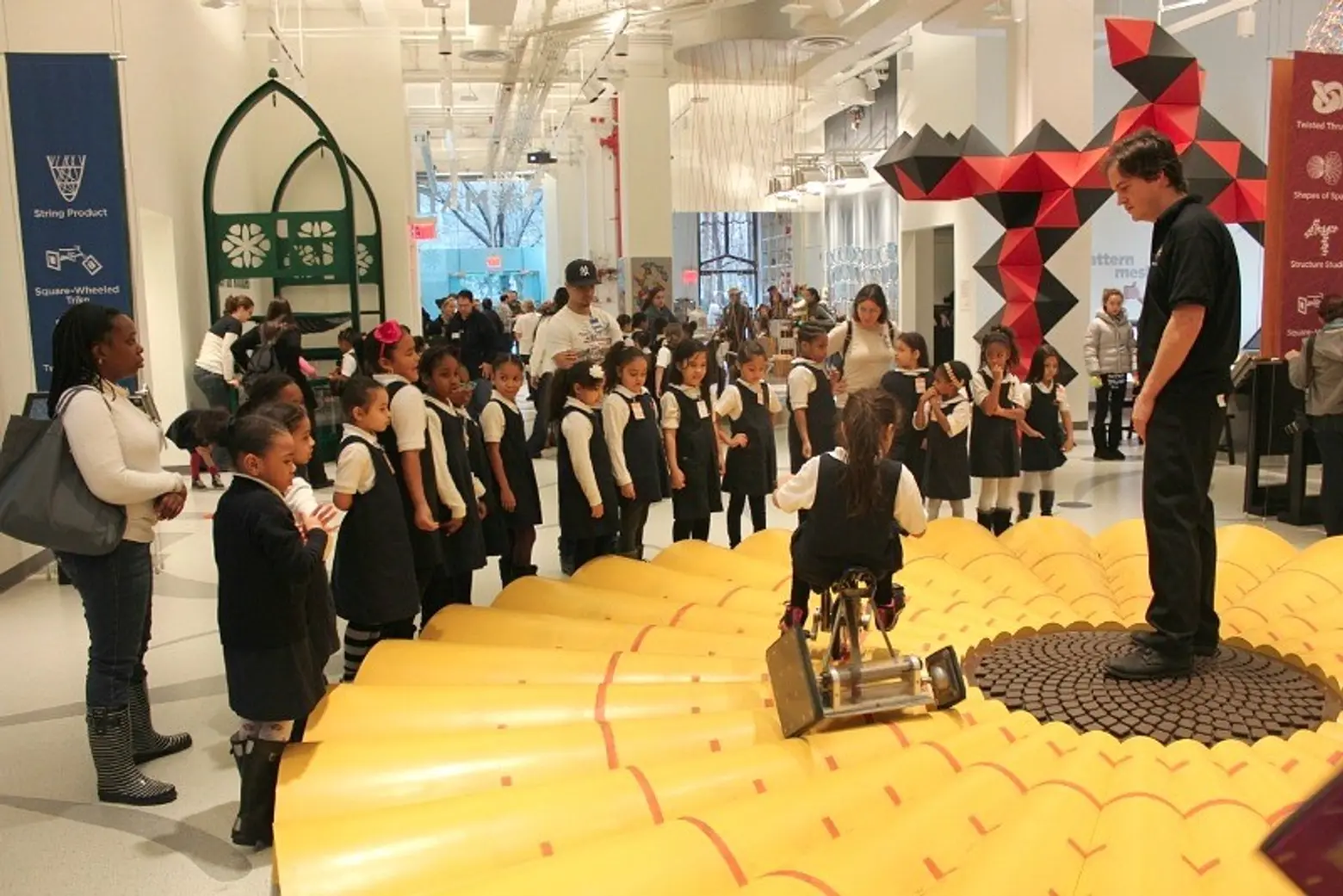
The tricycle exhibit
When designing an exhibit, what does the MoMath team think about?
We try to design exhibits so they’re appealing and engaging from the get go–there’s a button you want to push, a steering wheel you want to turn, or a race car seat you are really anxious to sit in. After you experience riding a square-wheel tricycle or driving a car around a Möbius strip, you’ll be inspired to wonder why and how and ask those questions. We hope that by interacting and playing with the exhibits, you get a sense of what it’s like to be a mathematician, which is to think about what might happen if and then explore that.
One of the things we strive for with every exhibit is to develop an experience that everyone will like–young children, an elementary school child, a middle schooler, high schooler, college student, and even math PhDs. That’s a tough challenge. We’re very successful with that in some exhibits and less successful with others, but it’s our goal
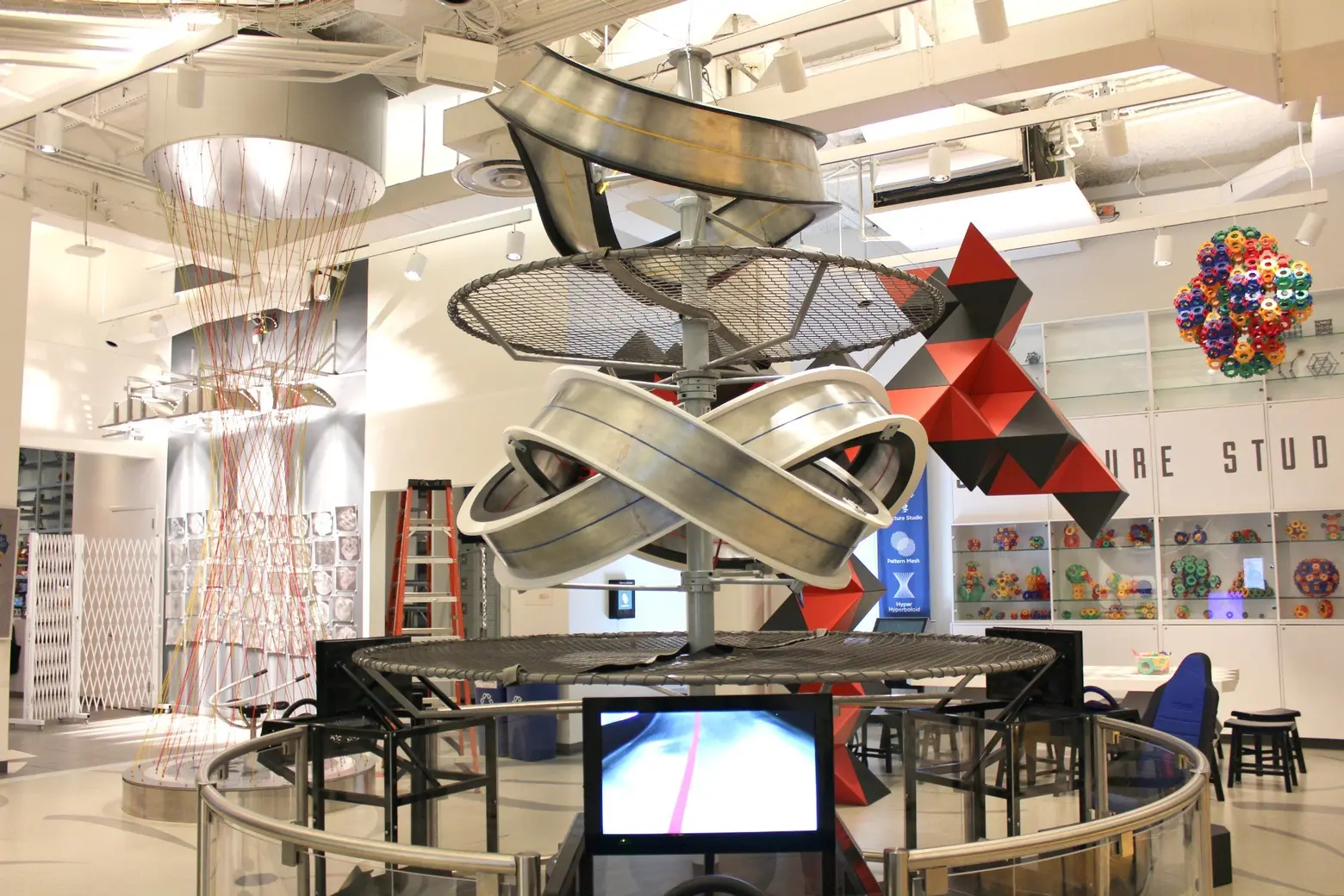
Twisted Thruway
What inspired the new exhibit Twisted Thruway?
We were inspired by an exhibit that was created years ago by Charles and Ray Eames, which had a car on a Möbius strip, but there was no interactivity to it. So it was our goal and challenge to see if we could find a way to make this interactive; that you’re actually driving. This was two years in the making because figuring out how to keep a car on the track when it’s basically upside down was a challenge, as was figuring out how to have those cameras speak to the screens so that you’re actually seeing what’s going on.
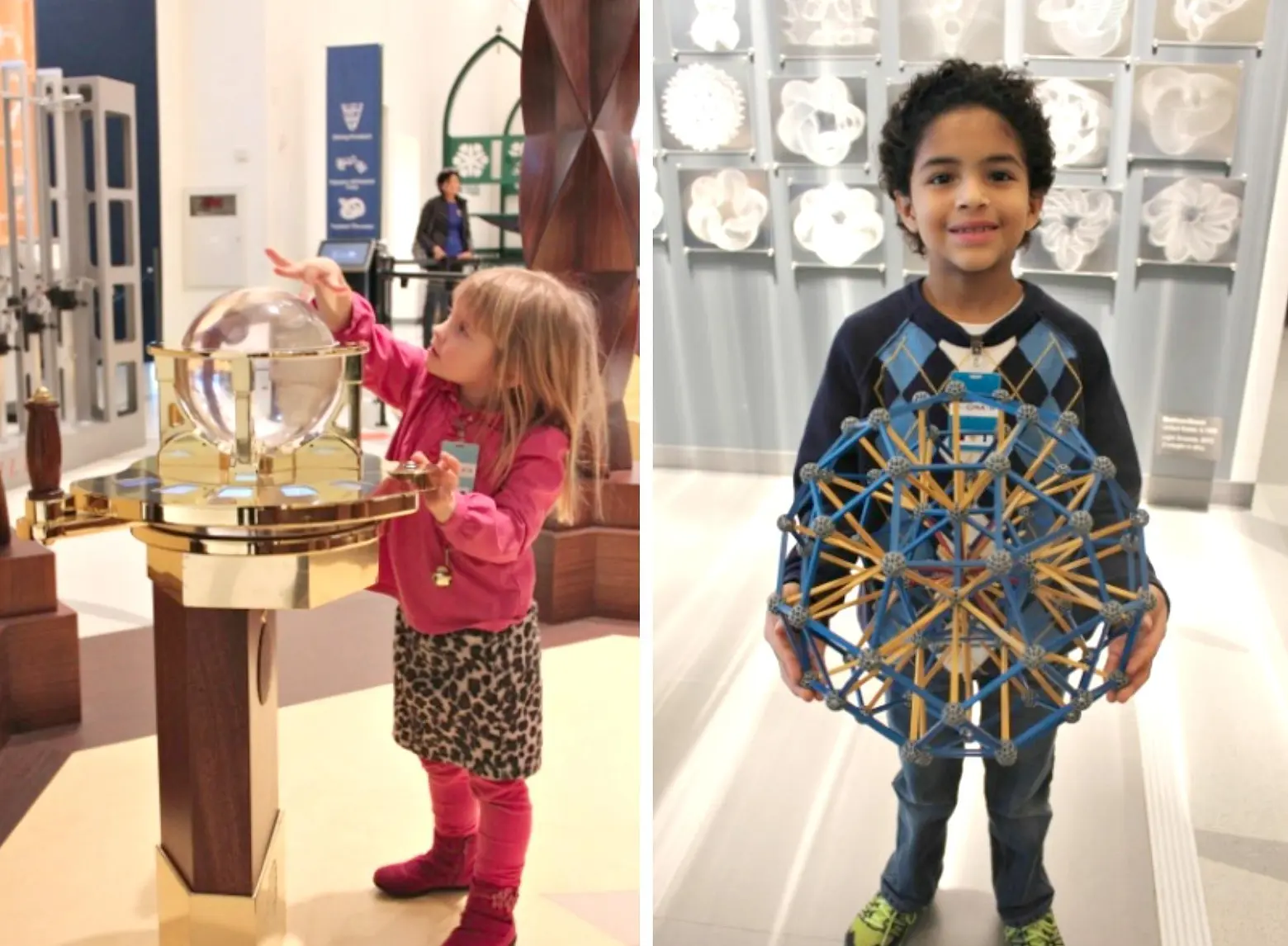
In the almost four years the museum has been open, what impact have you seen on those who visit?
Parents very often tell us, “I dragged my child in here and now I cannot get them to leave.” To me, that’s a score right there. We have toddlers who come in and will tell you the difference between a pentagon and a hexagon. For a toddler to be at that level because they’re having fun with the math, that’s a hit. Math teachers, in particular, never had a place to go on a field trip. They’re so anxious to get their kids inspired and motivated about math, and now we’ve given them a tool to do that.
We’ve actually had adults who come in and say that something they’ve seen here has not just inspired them, but changed their life. I have a letter from a woman who came to one of our presentations that inspired her so greatly, she went back to school and now has a career in data science. That happens with students, too. We have a young lady who volunteered to do some work with us and she said, “You know, I’m at MIT because I came and saw Eric Demaine from MIT give a talk here.”
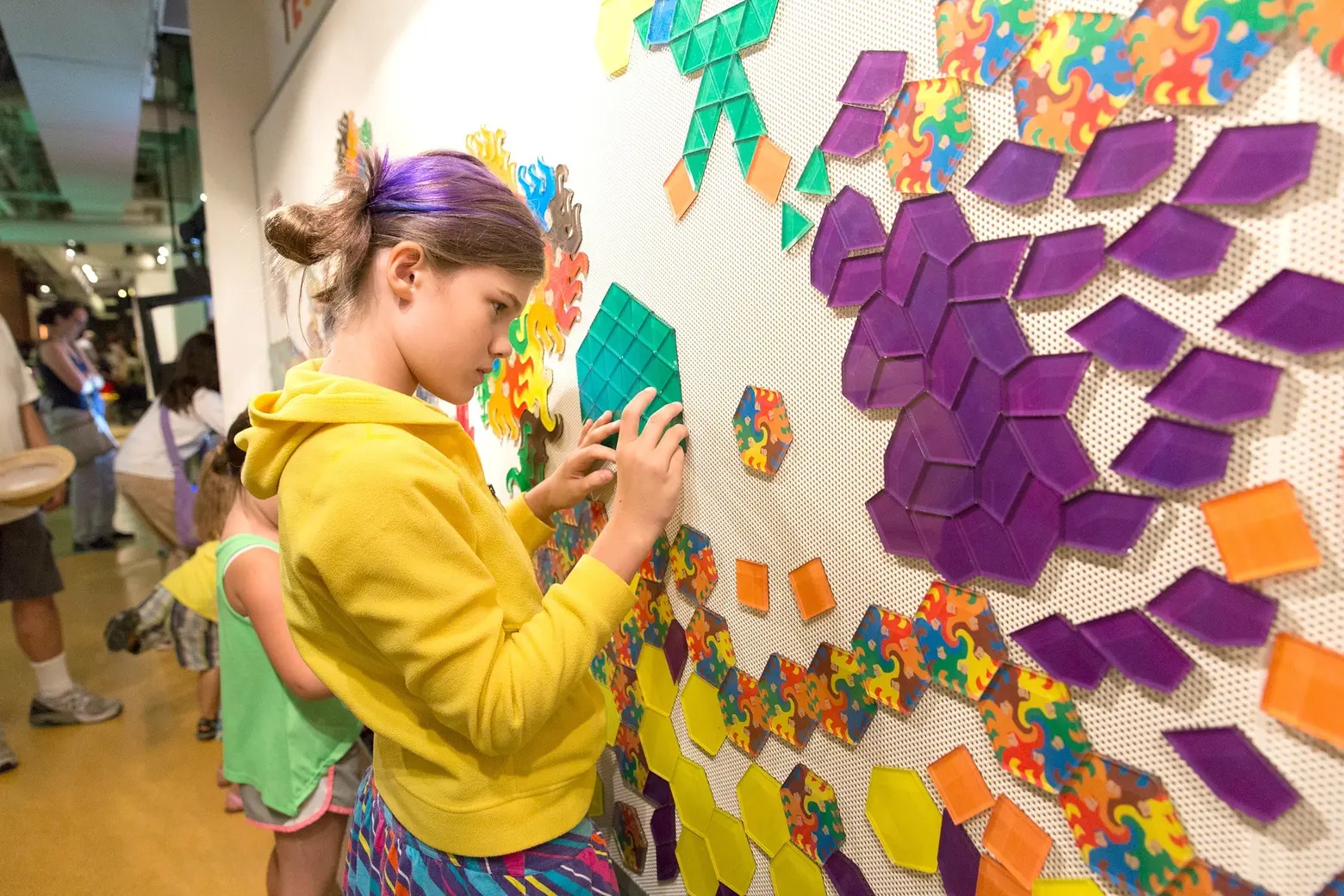
As the museum continues to evolve, what do you hope to both add and accomplish?
We still want to reach a broader audience. We’ve kicked off with Oppenheimer Funds here today and now with the support of Google and Con Ed as well, we have some Title I school field trips to the museum. Two Sigma is another supporter of that. We’d like to have more companies involved so we can bring more and more children who don’t otherwise have the opportunity. We would love to do a program that’s particularly focused on getting girls engaged in STEM; we’re just waiting for a funder. We are also bursting at the seams. We can’t accommodate everyone who wants to come in, especially the school groups. So eventually we need to think about having more space, which of course is a challenge in New York City.
At the end of the day, what’s the best part of your job?
I’m not a mathematician, and I’m amazed to see how cool math can be and how many areas of math there are that I never knew about. Being able to share that with a broad audience is really exciting. As a parent, when my children were younger, I delighted in sharing my love of math with them. Now my kids are grown up, but I delight in sharing that with other people’s children, other adults, and the whole world.
+++
[This interview has been edited for clarity]
National Museum of Mathematics
11 East 26th Street
New York, NY 10010
RELATED:
- Spotlight: BioBus’ Sarah Weisberg Helps NYC Students Find Their Inner Scientist
- New Yorker Spotlight: Gabrielle Shubert Reflects on Her Ride at the New York Transit Museum
- New Yorker Spotlight: Carter Emmart Brings Us Aboard His ‘Starship’ at the Museum of Natural History
All photos courtesy of National Museum of Mathematics
